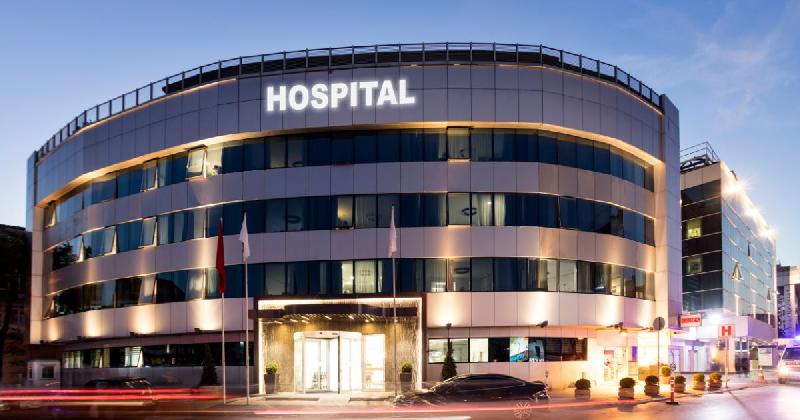Profitable and wealthy hospitals received a larger share of pandemic aid than it may have needed while hospitals that struggled financially were forced to reduce staff and scale back services, according to a Wall Street Journal analysis and healthcare experts.
The Department of Health and Human Services (HHS) chose to disperse the first few rounds of the roughly $175 billion in relief funding based on hospitals’ revenue, believing this would be a proper signal of a hospital’s size and therefore need. However, many wealthy or profitable hospitals received funding it did not necessarily need, while hospitals in more dire straits often didn’t receive the aid necessary to maintain key services or even stay afloat, according to the WSJ analysis of federal financial disclosure reports.
“Congress delegated extraordinary discretion to HHS to allocate $178 billion in provider relief. The previous administration felt urgency to get money out the door, and doling-out funds as a percent of historical revenues was one way to do this. But this means that some of the richest providers captured a large share of that relief,” Jason Buxbaum, a Harvard University doctoral candidate in health policy and previous policy analyst at the National Academy for State Health Policy, told the DCNF.
“Allocations arguably got better over time, with an increasing share of funds directed to some of the poorest and hardest-hit hospitals.”
As the pandemic continued, the allocation metric was shifted from revenue to hospital need, yet many hospitals with high caseloads still did not receive the proper funding to remain financially viable, Buxbaum said.
“As taxpayers, we ought to know what we got for this money, and we still don’t know,” Buxbaum continued.
Many large or wealthy hospitals reported profits from patient care while they were receiving aid, and some were already in a good financial position to deal with COVID-19, according to the WSJ, with over 1,200 hospitals that received $16.7 billion collectively in aid identified as profitable. Many were able to invest the relief funds, while others built new facilities and expanded their campuses.
For example, Inova Health System, a Virginia healthcare network that received $186.1 million of federal pandemic aid, reported a $255.5 million profit in 2020 and 2021, the WSJ reported. The hospital expanded its operations after receiving the aid, investing in stocks and a new healthcare center.
“Inova appropriately leveraged Provider Relief Funds in a thorough and transparent manner, consistent with federal intent to support expenses and lost revenues associated with the pandemic response,” an Inova representative told the WSJ.
Hospitals that did not receive enough funding were forced to lay off nurses and make budget cuts, according to the WSJ. Some of the hospitals that reported the highest number of deaths were the hospitals that did not receive enough funding at the start.
“It’s a bit like your low-lying house is about to be flooded, and the National Guard shows up and drops off some sandbags for you, but also brings a bunch to the homes on higher ground that are not particularly at risk,” said William Schpero, a health economist and assistant professor at Weill Cornell Medicine.
After the start of the pandemic, relief funds were eventually shifted to hospitals with a higher number of COVID-19 patients, but the funds still missed a few struggling hospitals, according to the WSJ.
The analysis concluded that the pandemic relief did not initially correlate with the number of cases in the areas surrounding hospitals, and resulting in staff reductions, scaling back of services and ongoing closures.
“Our agency is working on multiple audits focused on whether or not this funding was correctly distributed to health care providers (such as whether the funding was correctly calculated and disbursed to eligible providers),” Katherine Harris, senior public affairs specialist for the HHS Office of Inspector General, told the DCNF.
Though many hospitals did not receive adequate funding, those that prepared for the pandemic by borrowing money to increase cash reserves while also reducing their spending ended the pandemic on strong footings, Ge Bai, a Professor of Accounting at Johns Hopkins Carey Business School and Visiting Scholar for the Health Analysis Division of the Congressional Budget Office, told the DCNF.
“For some hospitals, their operations might be very bad already. It’s a double whammy. Their operations were bad, and they may have not received enough funding,” Bai said. “These hospitals did not have a strong financial footing before COVID, and COVID financially exaggerated their financial vulnerability.”
Gerard Anderson, professor of health policy and management at Johns Hopkins University, told the DCNF that hospitals were able to recover despite the distribution of pandemic aid.
“Any payment system that was developed as quickly as possible will always have some flaws, but overall hospitals were able to recover from the lost revenue as a result of the federal funding. It would not have been possible to determine need at the speed in which the money had to be dispensed,” Anderson said.
A study, co-authored by Bai, on COVID-19 and hospital financial viability in the U.S., showed that “although hospitals experienced a sizable reduction in operating margins in 2020, their overall profit margins remained similar to those in prior years, suggesting that the COVID-19 relief effectively offset the financial losses for hospitals during the COVID-19 pandemic.”
All content created by the Daily Caller News Foundation, an independent and nonpartisan newswire service, is available without charge to any legitimate news publisher that can provide a large audience. All republished articles must include our logo, our reporter’s byline and their DCNF affiliation. For any questions about our guidelines or partnering with us, please contact licensing@dailycallernewsfoundation.org.
via westernjournal

